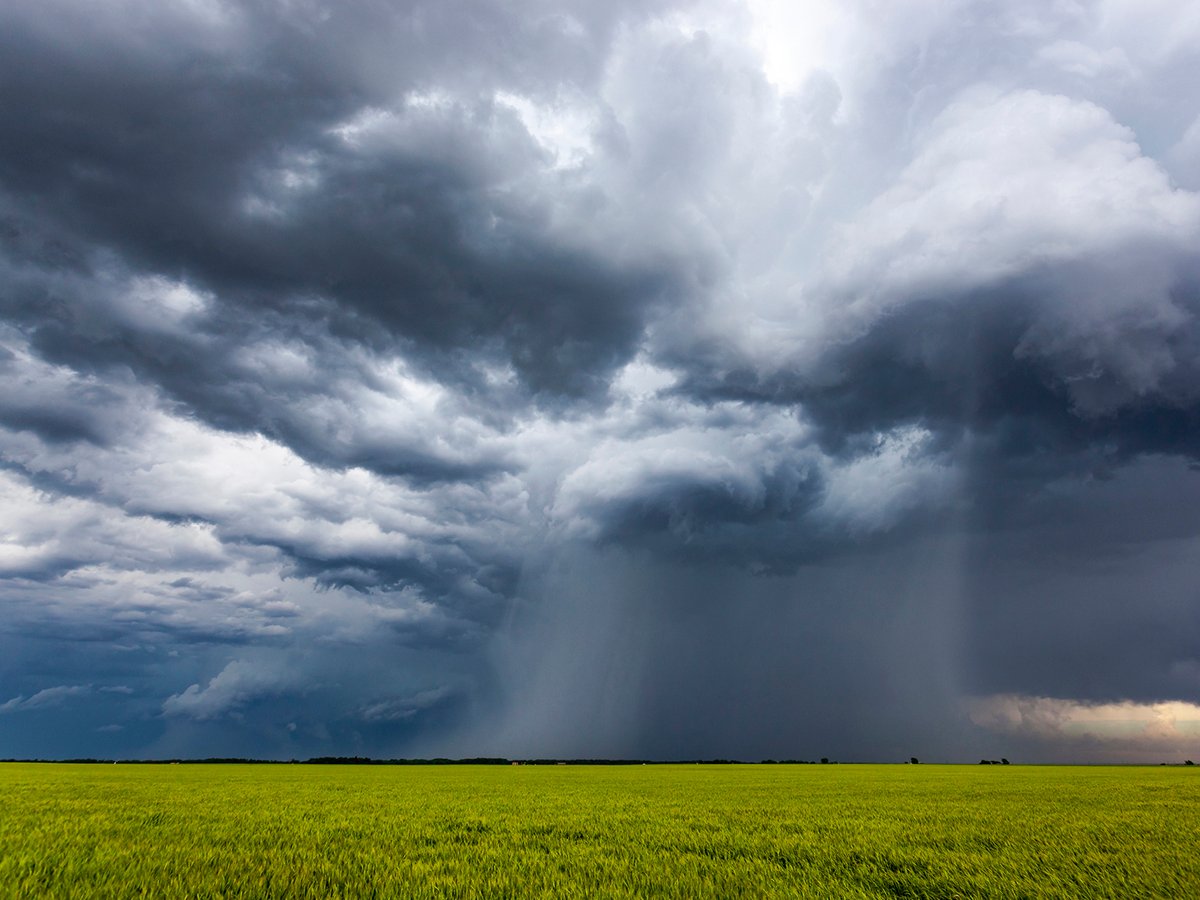Grasshoppers are chowing down on what little crop remains around Menno
Waldner’s Langham, Sask., farm.
He and his neighbor Richard Mierau have few options, other than early
cutting and baling for animals and hoping that something might be left
to combine.
Both expect yields will be a tenth of normal, maybe six to seven
bushels to the acre.
“I’ve never seen such a dilemma in my life,” said Waldner, who has been
farming for 35 years. He cited area fields where barley is half eaten
Read Also

Extreme rain increases as planet warms
In this issue, we are going to wrap up our look at extreme rainfall by examining the different weather patterns that tend to be associated with these rainfall events.
by grasshoppers.
Waldner said most farmers are spraying their yard sites to keep them
out, but little can be done in the fields.
“We’re at a point where the crop is so poor, to spend money on it, it
doesn’t pay,” he said.
Waldner, who had sprayed for weeds on a summerfallow field adjacent to
Mierau’s oat crop, offered to spray when he saw the grasshoppers moving
over there.
It helped, but more arrive once the hoppers take flight, said Mierau.
Mierau, who insured his hay but not the oats, said grasshoppers are
eating kernels off the heads of plants.
“They are doing lots of damage and there are lots of them,” he said.
“It doesn’t matter what crop; they’re attacking them all.”
Ken Svenson of the Saskatchewan Crop Insurance Corp., said 16,374
pre-harvest claims were filed as of Aug. 6, up from 9,000 in 2001. The
northwest is hardest hit.
Svenson said farmers must file claims before putting the remaining crop
to alternate uses like grazing.
Grasshopper damage is an insurable loss but also a preventable one, he
said. Each claim must be considered on a field by field basis by the
insurance adjustor.
“There’s an expectation that producers take some mitigation efforts,”
he said. Otherwise they might have the cost of spraying deducted from
their payout.
That way, area farmers who choose not to spray do not receive the same
compensation as those who do.
“It’s to make sure the guy who doesn’t follow the recommended practices
is not advantaged financially,” said Svenson.
He said adjusters assessing claims will examine whether farmers had a
window of opportunity to spray for grasshoppers and whether it was
feasible to do so. They determine that by seeing what others have done
in the area.
“If everyone has the same problem, then we can assume the window of
opportunity was not there,” Svenson said.














